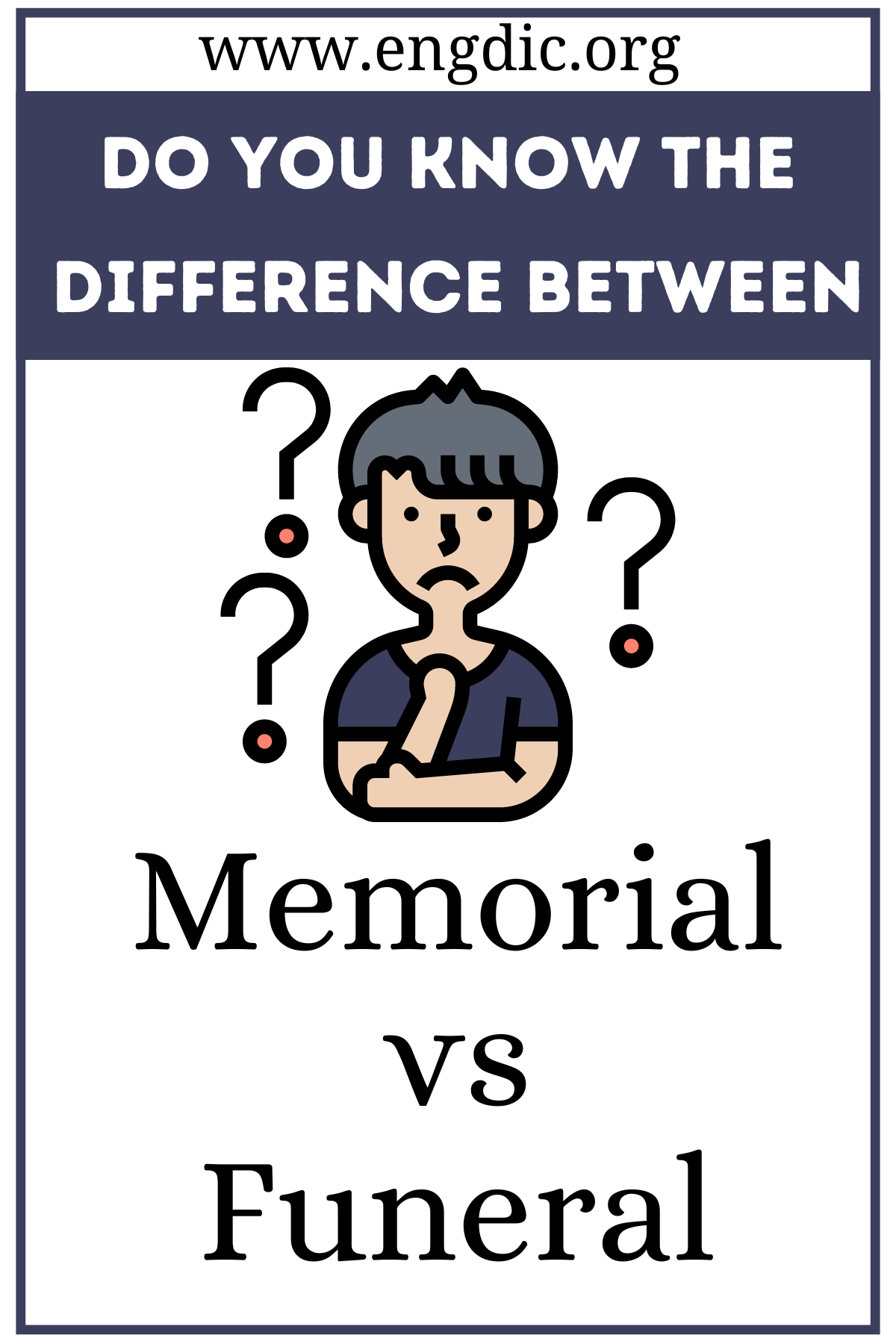A memorial and a funeral serve different purposes in commemorating a person’s life. A funeral traditionally involves a ceremony with the body present, allowing for rituals like viewing and final farewells. In contrast, a memorial is held after the body has been buried or cremated, often focusing on celebrating the deceased’s life and legacy without the body present.
Memorials are more flexible in timing and style, providing a more informal setting, while funerals are structured, allowing for closure soon after a person’s passing.
Memorial
Definition:
A memorial is a service or ceremony that commemorates and celebrates a person’s life, usually held after burial or cremation. The deceased’s body is not present, and the event focuses on honoring their memory.
Usage:
- Purpose: Memorials are used to reflect on and celebrate the life of the deceased, offering loved ones a chance to share stories, memories, and support one another.
- Timing: They can occur anytime after a person’s death, often days, weeks, or even years later.
- Flexibility: They vary widely in style, often held in informal settings like parks or community centers.
- Examples:
- A family gathers for a potluck memorial to remember their loved one.
- A memorial concert is held to honor a musician’s legacy.
Funeral
Definition:
A funeral is a ceremony held to honor a deceased person, typically involving the body being present in a coffin or casket. It follows rituals for burial or cremation and provides a structured environment for grieving.
Usage:
- Purpose: Funerals aim to acknowledge death, offer closure, and enable family and friends to say final goodbyes.
- Timing: They generally occur soon after death, often within a week.
- Structure: They follow traditional formats, often including prayers, readings, and a eulogy.
- Examples:
- A religious funeral service followed by a burial at a cemetery.
- A funeral held at a funeral home, featuring a eulogy by a close family member.







